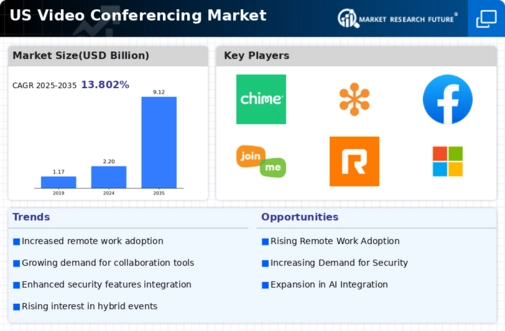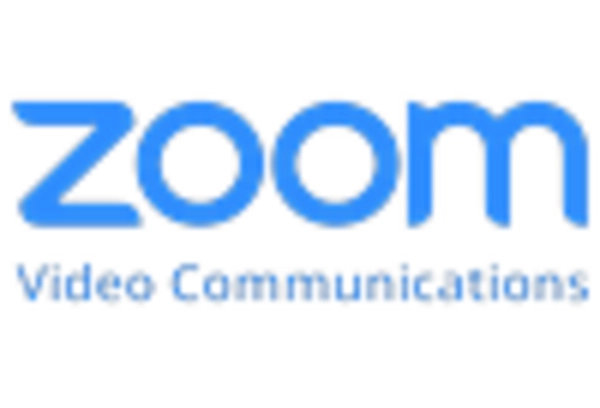Expansion of E-Learning Platforms
The expansion of e-learning platforms significantly impacts the video conferencing market. Educational institutions and training organizations are increasingly utilizing video conferencing tools to deliver remote learning experiences. This shift is driven by the need for accessible and flexible education solutions, particularly in a diverse learning environment. As of November 2025, the video conferencing market is witnessing a surge in demand from educational sectors, with projections indicating a potential growth rate of 15% in this segment alone. This trend suggests that video conferencing solutions are becoming integral to modern education, enabling interactive and engaging learning experiences for students across various age groups.
Growing Focus on Employee Well-being
The video conferencing market is increasingly influenced by a growing focus on employee well-being. Organizations are recognizing the importance of mental health and work-life balance, leading to the adoption of flexible work arrangements. Video conferencing tools are essential in supporting these initiatives, allowing employees to connect with colleagues and supervisors from the comfort of their homes. This trend is reflected in the market data, which indicates that companies investing in employee well-being initiatives are also more likely to adopt video conferencing solutions. The video conferencing market is thus adapting to meet the needs of organizations that prioritize a supportive work environment, which may enhance employee satisfaction and retention.
Increased Demand for Remote Collaboration
The video conferencing market experiences heightened demand for remote collaboration tools, driven by the evolving workplace dynamics in the US. Organizations are increasingly adopting video conferencing solutions to facilitate seamless communication among distributed teams. According to recent data, the market is projected to grow at a CAGR of approximately 12% over the next five years. This growth is indicative of a broader trend where businesses prioritize effective collaboration tools to enhance productivity and maintain operational efficiency. The video conferencing market is thus positioned to benefit from this shift, as companies seek to invest in technologies that support remote work and foster team engagement, ultimately leading to improved business outcomes.
Rising Demand for Cost-effective Solutions
The video conferencing market is experiencing a rising demand for cost-effective solutions as businesses seek to optimize their operational expenses. Companies are increasingly looking for affordable video conferencing tools that do not compromise on quality. This trend is particularly evident among small and medium-sized enterprises (SMEs) that require reliable communication solutions without incurring significant costs. Market analysis indicates that the video conferencing market is likely to see a shift towards subscription-based models, which offer flexibility and scalability for businesses. This approach allows organizations to manage their budgets effectively while still benefiting from advanced video conferencing capabilities.
Technological Advancements in Video Conferencing
Technological advancements play a pivotal role in shaping the video conferencing market. Innovations such as high-definition video, enhanced audio quality, and integration with other digital tools are becoming standard features. The introduction of 5G technology is expected to further enhance the user experience by providing faster and more reliable connections. As of November 2025, the video conferencing market is witnessing a surge in demand for platforms that offer these advanced features, with a notable increase in user adoption rates. This trend suggests that companies are willing to invest in sophisticated solutions that not only improve communication but also provide a competitive edge in their respective sectors.

















Leave a Comment